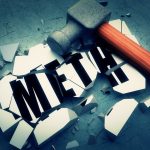Stimulant drugs, or psychostimulants, are a class of drug encompassing many legal, illegal, and prescription substances.
By definition, all stimulant drugs increase central nervous system activity when taken, often including heart rate, blood pressure, energy, and alertness.
However, stimulant drugs’ methods of ingestion, lengths of effect, and the lengths of time that they can be detected through urine drug screens and other drug tests vary depending on the type of drug and other factors.
Cocaine
Cocaine/crack cocaine is a fast-acting central nervous system stimulant produced from the leaves of the coca plant.
This illicit and highly addictive drug can be taken through injection, smoking, snorting, swallowing, or rubbing on the gums.
Effects Of Cocaine
Cocaine use triggers a short-term rush and/or euphoric high that lasts from 5 to 30 minutes.
Cocaine Half-Life
Cocaine’s half life (the amount of time it takes the body to eliminate 1/2 of a dose) is only about one hour, though this period can be significantly longer if alcohol or other substances have been consumed.
Because this half-life period is so short, drug tests generally screen for benzoylecgonine, a metabolite of cocaine with a twelve-hour half-life.
Cocaine Detection Times & Drug Tests
As a general rule, drug tests can detect cocaine use in physical samples for the following periods of time after your last use:
- urine tests: 3 days
- saliva tests: 2 days
- blood tests: 2 days
- hair tests: 90 days or longer, though hair follicle testing is rare and less reliable than other drug testing methods
Methamphetamine
Methamphetamine, also known as meth or crystal meth, is a dangerous and highly addictive synthetic stimulant drug.
Methamphetamine is used medically in unusual situations, though it is far better known as a dangerous and illegal street drug.
Methamphetamine may be smoked, injected, taken orally, or snorted.
Effects Of Methamphetamine
Depending on how it is taken, a methamphetamine rush can last up to thirty minutes and will be followed by a protracted high lasting between four and twelve hours.
This is, in turn, followed by a crash or comedown and lengthy symptoms of exhaustion, depression, agitation, and potentially psychosis as the body recovers.
Methamphetamine Half-Life
The half-life of methamphetamine is around 10 hours.
Methamphetamine Detection Times & Drug Tests
General detection times following methamphetamine use include:
- urine tests: 5 days
- blood tests: 5 days
- saliva tests: 4 days
- hair tests: 90 days
MDMA
MDMA (3,4-methylenedioxymethamphetamine), also known as Ecstasy or Molly, is a synthetic party drug with no accepted medical use.
Effects Of MDMA
While the drug itself has properties of stimulants, hallucinogens, and entactogens, MDMA pills and powder are frequently cut with a variety of other drugs and filler substances that can cause unpredictable side effects.
MDMA’s effects are generally felt within 30 to 60 minutes and last for up to four hours.
MDMA Half-Life
MDMA has a half-life of around six hours.
MDMA Detection Times & Drug Tests
MDMA use can be detected in drug screenings for up to the following periods:
- urine tests: 3 days
- blood tests: 2 days
- saliva tests: 2 days
- hair tests: 90 days
Prescription Stimulants
Amphetamine salts, methylphenidate, and dextroamphetamine, better known by the respective brand names Adderall, Ritalin, and Dexedrine, are prescription drugs used treat attention deficit hyperactivity disorder (ADHD), narcolepsy, and (rarely) obesity over long periods of time.
However, these prescription medications are also common drugs of abuse, and are diverted by high school and college students to get high or to improve academic and/or athletic performance for short periods of time.
Effects Of Prescription Stimulants
The effects of amphetamines and similar drugs on the body include increased energy, stamina, enthusiasm, and social impulse. In higher doses, these drugs can also trigger a dangerous stimulant high similar to methamphetamine.
Short-acting ADHD treatments have effects that last around 3-6 hours. Long-acting formulations can last between 6-12 hours, depending on the specific product.
Prescription Stimulant Half-Life
The average half-life for amphetamine salts, methylphenidate, and dextroamphetamine are 10 hours, 3.5 hours, and 12 hours, respectively.
Prescription Stimulant Detection Times & Drug Tests
Rough detection windows for amphetamine salts, methylphenidate, and dextroamphetamine are as follows:
- urine tests: 4 days (amphetamine salts), 2 days (methylphenidate), 2 days (dextroamphetamine)
- blood tests: 2 days (amphetamine salts), 12 hours (methylphenidate), 2 days (dextroamphetamine)
- saliva tests: 2 days for amphetamine salts, methylphenidate, and dextroamphetamine
- hair tests: 90 for amphetamine salts, methylphenidate, and dextroamphetamine
Factors That Affect Stimulant Detection Times
A variety of different factors influence how quickly or slowly any specific drug is processed out of the body, including:
- frequency of use
- length of use
- dosage
- body mass
- age
- gender
- other substance abuse or drug addiction
- hydration
- metabolism and liver/kidney health
- overall health and physical resilience
If you or a loved one require substance use disorder treatment programs and detox services, contact Northeast Addictions Treatment Center to learn about our outpatient addiction treatment options today.
Sources
Written by
Northeast Addition Editorial Team
©2024 Northeast Addition Center | All Rights Reserved
This page does not provide medical advice.



